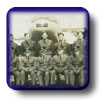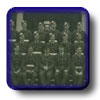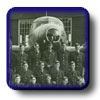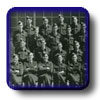Purpose
 By
the time the war broke out in September, 1939, it had become
apparent that the United Kingdom would be incapable of accommodating
an air force training program of the size required;
there simply wasn’t enough room, and the British Isles were
too vulnerable to enemy attacks. The British needed to look
elsewhere in the Commonwealth. By
the time the war broke out in September, 1939, it had become
apparent that the United Kingdom would be incapable of accommodating
an air force training program of the size required;
there simply wasn’t enough room, and the British Isles were
too vulnerable to enemy attacks. The British needed to look
elsewhere in the Commonwealth.
 The
British Commonwealth Air Training Plan (BCATP) was just
one part of the larger Empire Air Training Scheme (EATS),
which conducted training in countries like South Africa,
New Zealand, Australia and the UK itself. While more training
schools operated in Britain proper than in Canada, the BCATP
produced more aircrew than any other component of the
EATS. The
British Commonwealth Air Training Plan (BCATP) was just
one part of the larger Empire Air Training Scheme (EATS),
which conducted training in countries like South Africa,
New Zealand, Australia and the UK itself. While more training
schools operated in Britain proper than in Canada, the BCATP
produced more aircrew than any other component of the
EATS.
 Canadian
Prime Minister William Lyon Mackenzie King was hesitant at first about the Plan. Once the war started,
however, he realized that it was the best solution to at
least one political conundrum. Conscription and the high
number of Canadian casualties had divided the country during
World War I. By presenting the British Commonwealth Air
Training Plan as Canada’s signature contribution to World War II, Mackenzie King hoped to avoid this problem. Canadian
Prime Minister William Lyon Mackenzie King was hesitant at first about the Plan. Once the war started,
however, he realized that it was the best solution to at
least one political conundrum. Conscription and the high
number of Canadian casualties had divided the country during
World War I. By presenting the British Commonwealth Air
Training Plan as Canada’s signature contribution to World War II, Mackenzie King hoped to avoid this problem.
 Mackenzie
King was also reinforcing Canada’s political and legal
sovereignty that it
had just gained with the Statute of Westminster in 1931.
The original British proposal was for the BCATP to be run
by the Royal Air Force (RAF). Mackenzie King refused, insisting
that Canadians run the Plan. King, in this case, prevailed. Mackenzie
King was also reinforcing Canada’s political and legal
sovereignty that it
had just gained with the Statute of Westminster in 1931.
The original British proposal was for the BCATP to be run
by the Royal Air Force (RAF). Mackenzie King refused, insisting
that Canadians run the Plan. King, in this case, prevailed.
The original agreement was negotiated to expire
on March 31, 1943. By 1942 it was apparent that the war would
not be over by then. At the same time, the logistics
of the war had been drastically changed with the Japanese
and American entry. Consequently, the agreement needed to be changed.
With the new agreement, Canada strengthened its control
over the Plan. British RAF schools that previously had operated
within Canada but independent from the Plan were now integrated
into it. The new agreement extended the BCATP until March
31, 1945.


|
 Heritage Community Foundation Presents
Heritage Community Foundation Presents Heritage Community Foundation Presents
Heritage Community Foundation Presents